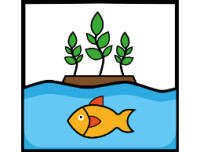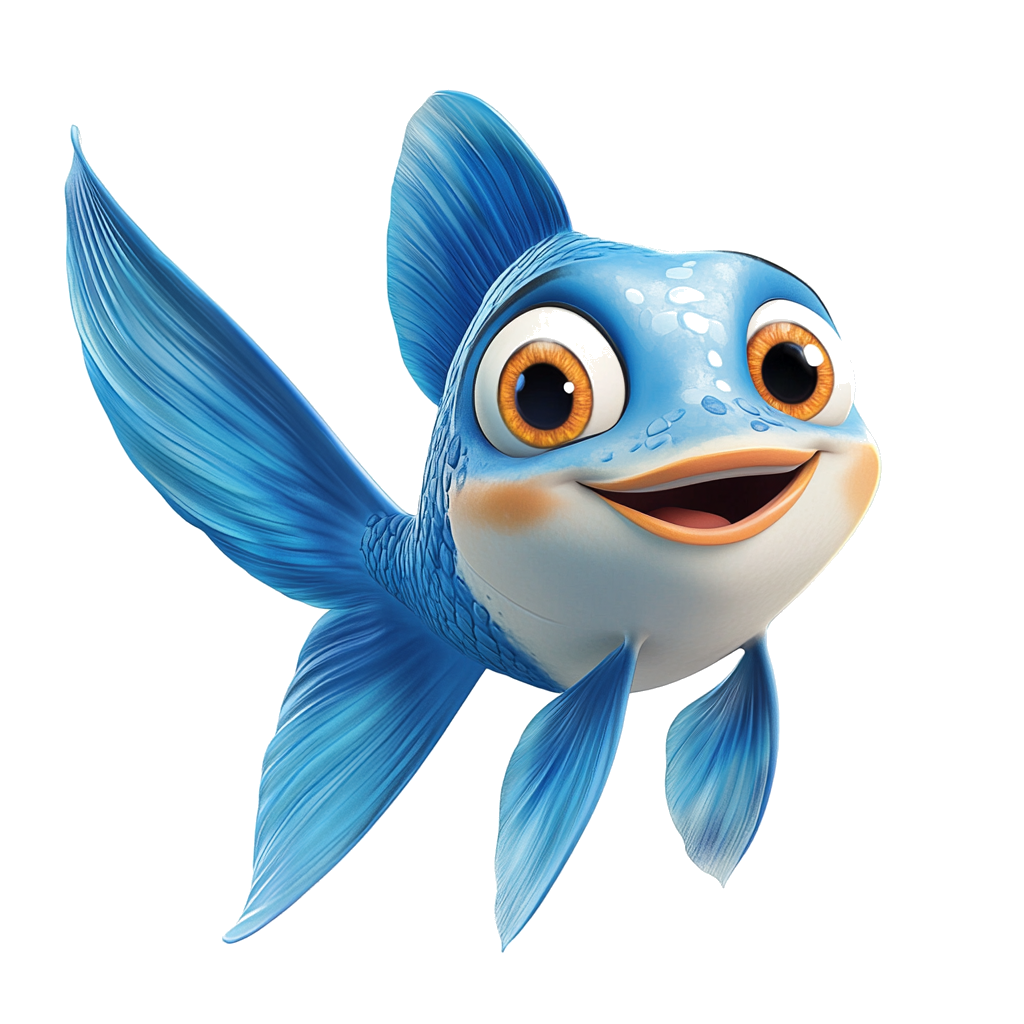Aquaponics Basics

Aquaponics is a sustainable food production system integrating aquaculture with hydroponic crops.
The EU Aquaponics Hub defines aquaponics as "a production system of aquatic organisms and plants where the majority (> 50%) of nutrients sustaining the optimal plant growth derives from waste originating from feeding the aquatic organisms."
Conventional hydroponics relies on chemical nutrient solutions added to the water. In aquaponics, plants get their nutrients primarily from the waste of fish and/or other aquatic beings.
While ancient cultures have long grown fish in irrigation canals, aquaponics really got started at the New Alchemy Institute, which coined the term "aquaponics" in the 1970s. A number of universities continue to conduct aquaponics R&D and training. The University of the Virgin Islands aquaponics program is one of the most successful.
Aquaponics has become especially important as climate change and soil degradation has made growing food with conventional farming increasingly difficult and expensive. More than 150 different vegetables, herbs, flowers and small trees have been grown successfully in aquaponic systems.
There are now many successful aquaponics operations around the globe producing vast amounts of fresh, nutritious food. However, there is a lot of hype surrounding the subject and aquaponics is not always as simple and easy as some claim.
Because fish waste doesn't contain all of the nutrients plants need and the water pH requirements can differ between plants and fish, some aquaponic systems decouple the fish from the plants and manage the plant water separately.
Most fish need a water pH of about 7, with some species, such as African cichlids, needing higher. Most plants need water that is on the acidic side of 5.5 to 6.5. Nutrient availability is connected to pH and if the water is too acidic or alkaline the plants won't be able to uptake the nutrients they need. Therefore, in a closed-loop (coupled) system it is important to match the pH requirements of both the fish and plants.
To get the missing nutrients to plants in a coupled system, the nutrients can be added to the water stream after the fish and sprayed on the leaves of the plants. Plants can take in a limited number of nutrients through pores in their leaves as well as their roots. Spraying nutrients onto leaves is called foliar feeding, but it is not a substitute for nutrients absorbed through the roots.
De-coupling the fish tanks from the plants enables more precise water and nutrient management. This means that the water is not in a closed loop where it circulates continually between fish and plants but goes into a reservoir for treating before being used for plants and possibly processed further before being used again for fish.
Aquaponics Success
A successful sustained aquaponics operation requires being good at both keeping fish and growing plants in a hydroponics system. This means having a basic understanding of the biology and chemistry involved and closely managing water quality and nutrient levels.
Source Water
Much of the well water and municipal tap water in Nova Scotia is unsuitable for fish, aquaponics or hydroponics. Some well water is too high in iron and manganese and can also contain arsenic, uranium and lead. All municipal tap water contains chlorine, which can be eliminated easily enough by letting it sit for a couple of days or using a de-chlorinating product, but over half of water systems in Nova Scotia also add the potent neurotoxin fluoride which has been proven to reduce IQ in humans and is no longer recommended by the U.S. govt.. Some water systems also add highly toxic chloramines, which can be more difficult to remove.
Water from rivers and lakes is often very acidic and can contain mercury, pesticides and herbicides and other contaminants. One could use rain water filtered with a sediment filter and good carbon filter to obtain water of sufficient purity. However, one doesn't real know the quality of a water source until the water has been tested.
Due to the general low water quality in Nova Scotia, it is advisable for most to use a reverse osmosis (r.o.) water filter for aquaponics water. However, reverse osmosis can result in water that is acidic and it is best to re-mineralize the water and boost the pH if required. One can purchase a re-mineralization cartridge for the filter but even the best ones don't seem to last very long and the cartridges are expensive.
A more cost effective method to increase water pH is to store water in a bucket with some crushed limestone (dolomite) and an airstone to circulate the water. Crushed dolomite can be purchased at many garden supply stores. Just be sure wash it thoroughly before using.
Depending upon the type of fish, shrimp or other aquatic beings you keep, water hardness and conductivity may also be a consideration.
You MUST ALWAYS test the pH of water used for aquaponics, adjust it as needed before using it and test it at least weekly and adjust the pH as needed to ensure that it stays at the right value.
Tank Filtration
Aquariums and other tanks used to house fish and other aquatic beings require filtration sufficient to quickly break down biological waste. There are three types of filtration: mechanical, biological and chemical. Some filters combine all three methods of filtration. For a small scale aquaponics operation one can use filters sold for the aquarium trade, for larger operations it may be best to build your own filtration system or buy a commercial system.
Undergravel filters were popular aquarium filters for decades but have given way to external filters and sponge filters.
There is an increasing number of people with aquariums without any filters that require very little maintenance. These usually include soil below a layer of gravel or sand.
The Aquatic Nitrogen Cycle
Fish and the decomposition of organic matter produce ammonia, which is toxic to fish and other aquatic life.
Certain kinds of bacteria convert the ammonia to less harmful nitrites and other kinds of bacteria convert the nitrites into even less harmful nitrates.
Nitrates accumulate in an aquatic ecosystem (aquarium/fish tank) unless removed by water changes or anaerobic bacteria. A nitrate level of more than 40 ppm can be harmful to fish and must be reduced.
Ammonia poisoning is the most common cause of fish illness and death but can be easily prevented by not introducing fish into a tank until it has developed sufficient populations of bacteria to process the ammonia and by not overstocking a tank. Ammonia can also be reduced with zeolite clay.
On its own, it can take a filter at least 2-3 weeks for enough bacteria to become established to handle fish waste and keep ammonia levels low. This can be shortened by introducing beneficial bacteria into the system to seed it. In both methods one must either provide organic matter that will be converted to ammonia or add ammonia. Adding a small amount of urine is one way to kickstart the nitrogen cycle but one should not use urine that may contain medication. Some aquarium gravel may come with added bacteria.
The nitrogen cycle can be tracked by measuring ammonia, nitrites and nitrates. As bacteria become established, ammonia levels will drop while nitrites increase and then drop with a slight increase in nitrates. Below is an in-depth video on the nitrogen cycle. The API Master Test Kit is a good test kit for pH, ammonia, nitrates and nitrites for small scale operations. For larger scale aquaponics it is best to invest in laboratory grade test instruments, such as those from Hanna Instruments.
Ethical Aquaponics
Serious aquarists understand that most fish are intelligent and sensitive beings. They have distinct personalities, form social bonds, experience emotions, feel pain and need a stimulating natural environment. Scientific research confirms that “fish perception and cognitive abilities often match or exceed other vertebrates”.
The UK’s Animal Welfare (Sentience) Act 2022 legally recognizes that all vertebrates (mammals, fish, amphibians, birds, reptiles), cephalopod molluscs (octopuses, squid, cuttlefish and nautiluses) and decapod crustaceans (crabs, lobsters, crayfish, shrimp, and prawns) are sentient. UK law requires that people properly care for all such beings under their control.
For ethical and economic considerations we recommend growing fish and other aquatic beings to sell, not eat. Live fish sold for the aquarium trade can bring a price per kilo that is 1,000 times higher than dead fish sold for food.
If you need assistance getting your fish tanks up and running, we are happy to help.
